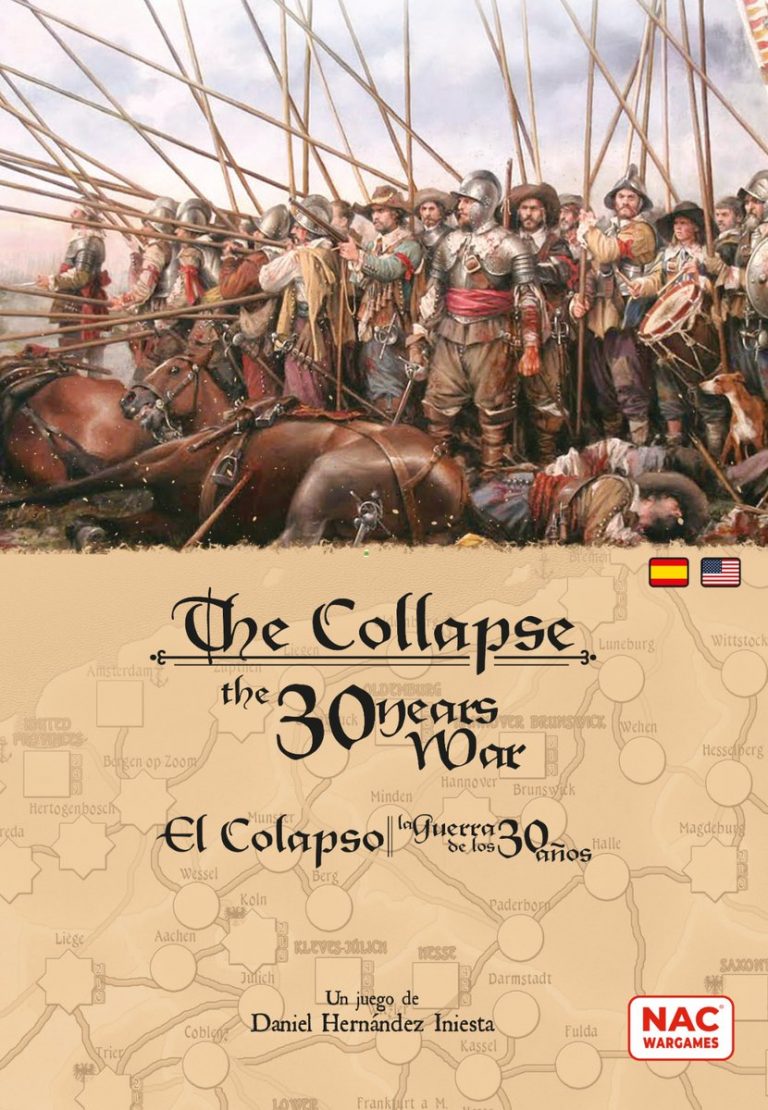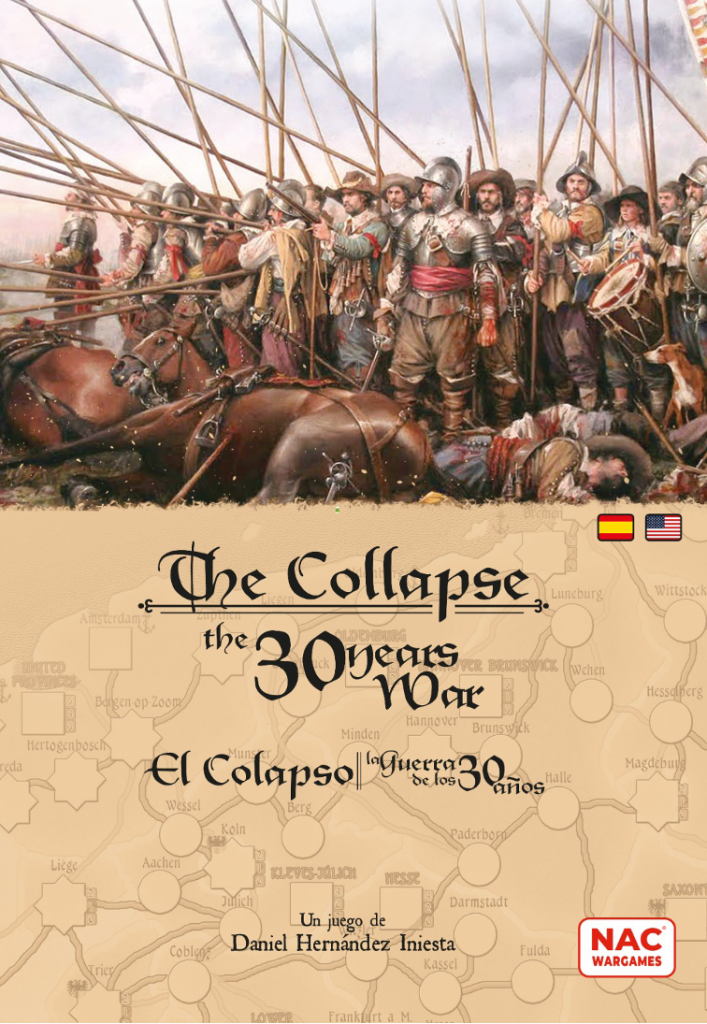
Foto de portada: Arte obra de Augusto Ferrer Dalmau
For English version of this article, please scroll down
1. El impacto de la logística en ‘El Colapso’
‘El Colapso’ tiene un diseño como juego estratégico, y con una escala de juego para cada turno de 2-3 años. Si tenéis interés en conocer escala de juego para los asedios ver en esta misma web el artículo ‘Los Asedios en El Colapso’.
Teniendo en cuenta este aspecto de diseño estratégico y duración de turno, la logística no se podía centrar en líneas de suministro por las siguientes razones:
- Una duración de 1 año tendría lógica al tener un redespliegue estratégico o vuelta a una zona segura con suministros, durante la época de invierno cuando la maniobrabilidad de los ejércitos durante la guerra de los 30 años era menor.
- Por ello, el juego al ser una escala de 2-3 años se centra a nivel estratégico en el control de regiones natales que son aquellas que a cada facción le proporcionan recursos materiales y humanos como el caso de España (Flandes, Franco Condado y Lombardía), o regiones no natales que controle. Al final del turno y durante el paso de ‘Desgaste de fin de turno’, el tener acceso a zonas natales o controlar otras regiones, simula en el juego un control político sobre la distribución y aprovisionamiento que permite a los jugadores no sufrir desgaste (pérdida de pasos de unidades) por la logística.
- Ejemplo: España (nación controla la facción católica), tiene al final del turno un ejército en Flandes y no sufre desgaste al ser una de sus regiones natales. Pero si, por el contrario, al final del turno un ejército en Württemberg y no ha controlado la región sufriría desgaste.
2. La logística durante la guerra de los 30 años tenía una clave para mover los ejércitos y unidades, y era la alimentación y aprovisionamiento se producía principalmente por la acumulación de recursos por las regiones donde se movían, provocando generalmente saqueos y asaltos o asedios a ciudades.
- En el juego este hecho de aprovisionar los ejércitos y unidades durante su movimiento se refleja de 2 maneras con un impacto en el juego para conseguir recursos y/o impactar en el desgaste que sufren:
Mediante el uso de la operación de reemplazos. Por cada punto de Operaciones de una carta que se use para esta operación de acumulan 2 recursos. Este hecho refleja en el juego, la inversión de tiempo en la operación por el jugador para buscar recursos durante su movimiento sin provocar saqueos.
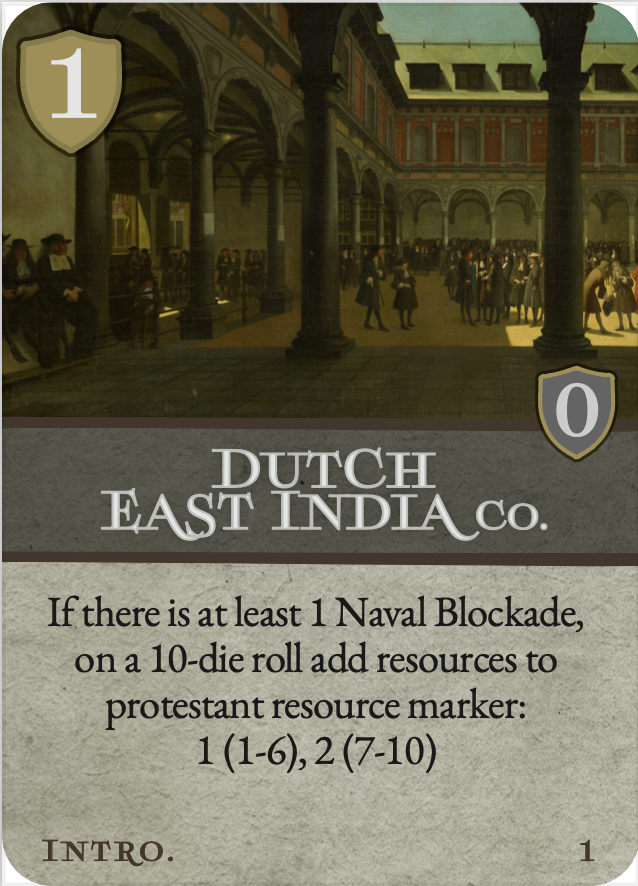
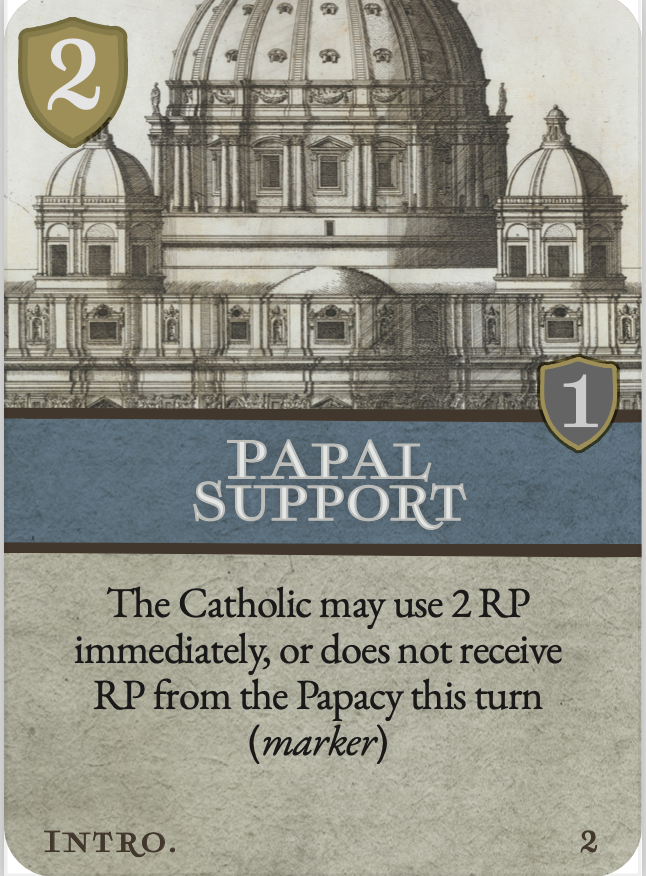
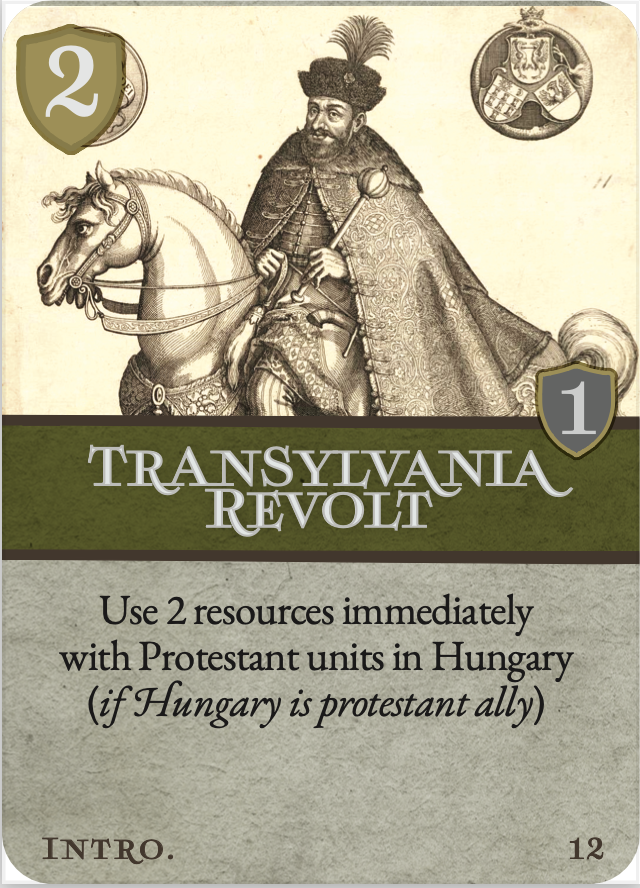
Foto: Cartas de testeo del juego (inglés). Arte de Donal Hegarty
Y cuidado, porque el uso adecuado de capacidades del juego puede haber adquirido los jugadores aporta más recursos si se combina con esta operación.
Ejemplo: El jugador protestante gasta 1 punto de operaciones de la carta para realizar una operación de reemplazos y acumula 2 recursos en su ficha de recursos en el marcador general del juego. Pero si usa con la operación de reemplazos la capacidad que ha adquirido previamente en la fase de planificación al inicio del turno de ‘Ayuda extranjera’, gana 2 recursos más y en total serían 4. Posteriormente podrá usar en la siguiente fase de planificación los recursos para recuperar unidades dañadas que han sufrido desgaste, promocionar unidades, reclutar milicias e influir en diplomacia.
Mediante el saqueo de las regiones. Cuando un jugador toma el control de una ciudad enemiga, gana recursos según el tipo de ciudad: ciudad menor (1 recurso), ciudad fortificada (3 recursos) y capitales (5 recursos). No obstante, estos recursos son a costa del saqueo de una región y para indicar este hecho se sitúa una ficha de saqueo en la región.
- Si es una región con una sola ciudad (ejemplo Hamburgo, Lieja, Trieste, etc.), no se sitúa la ficha de saqueo (pero se acumulan los recursos correspondientes por el tipo de ciudad saqueada).
- Si es una región con más de una ciudad, la primera vez que se saquea la región se pone una ficha de saqueo con una imagen en amarillo, y la segunda vez se gira la ficha a su lado con una imagen en gris. Si se toma control de una 3ª o posteriores ciudades de la región (si las contiene), se toma el control normalmente pero no se sitúan más fichas de saqueo que están limitadas a 1 por región, y como máximo en su lado gris. Pero esta acción tiene un lado negativo para el jugador, y es que, si un jugador se mueve desde una región con una ficha de saqueo, sufre desgaste (gira una unidad de fuerza completa a reducida si tiene alguna, y si no tiene ninguna a fuerza completa puede retirar una unidad de fuerza reducida a la reserva del juego). Además, al inicio del turno las fichas de saqueo se giran de su lado gris a amarillo o del lado amarillo a la reserva del juego, excepto si hay ejércitos de ambas facciones en una misma región con fichas de saqueo que no se modifican. Por ello, el saqueo aporta más recursos, pero sitúa fichas de saqueo limitan el movimiento al simular que es más difícil conseguir recursos y la sobrealimentación de ejércitos de ambas facciones en una misma región impide que se recupere ese turno una región de los saqueos sufridos previamente.

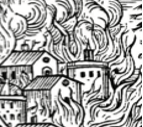
Foto: Ficha de saqueo inicial (amarillo) y final (gris)
Finalmente, el uso de la capacidad de ‘Vagones de suministro’ evita que una unidad sufra desgaste, y existiendo más de 26 capacidades diferentes a elegir al inicio del turno durante la fase de planificación se aporta una gran rejugabilidad y estrategias diferentes a cada partida y turno. Por ello, si un jugador prevé una campaña en una región lejana o que prevea complicaciones, puede ser interesante adquirir esta capacidad … si sigue disponible, ya que ha podido ser elegida por el otro jugador. Más información sobre las capacidades del juego en un próximo artículo.
2. El Colapso en las jornadas de ‘Pax Lúdica’
En las próximas jornadas de ‘Pax Lúdica’ que organizan Mesa de Guerra y el club Pax Lúdica de la ciudad de Cádiz (España) entre los próximos 29 de septiembre y 1 de Octubre, podréis ver los avances del juego del mapa, cartas, fichas y mecánicas que os animo a que vengáis a probar y vernos.
Además os animo a que os apuntéis a las jornadas (fecha límite de registro el próximo 31 de Agosto). Por 20 euros de registro tendréis acceso los 3 días a mesas de juego, torneos, una camiseta y el juego he diseñado especialmente para las jornadas de ‘La Defensa-El Asedio de Cádiz 1625’ con el fantástico arte de Nils Johansson y que se entregará de manera totalmente gratuita a los asistentes.
Más información en el link https://mesadeguerra.com/jornadas-pax-ludica-2023/

Foto: Póster de las jornadas ‘Pax Lúdica 2023’ en Cádiz
3. El Colapso
‘El Colapso’ wargame estratégico sobre la guerra de los 30 años (1618-1648) después de un testeo intenso en convenciones de wargames y juegos de mesa y en vassal, está abierto el testeo en vassal a todas las personas interesadas.
Si estás interesado en participar en el juego, regístrate en el link a continuación y en los siguientes días me pondré en contacto contigo con los archivos y cualquier duda que tengas
Link de registro al testeo en vassal de ‘El Colapso’:
https://docs.google.com/forms/d/1mHUTHszl_MAdkOpBzmY5EnjM5efyyf0P_z0uxbH-kxI/edit
El juego está actualmente en reserva en la página web de NAC Wargames y Mas que Oca (sin solicitud de pago), donde podéis apoyar la publicación del juego con vuestro registro en http://tinyurl.com/yfkkdbc3


Foto: Fichas de líderes del juego. Material de testeo arte de Donal Hegarty
Es muy importante vuestro registro en la reserva del juego, para apoyar a que el juego se publique finalmente.
Si tienes alguna pregunta o quiere que amplíe un artículo o escriba sobre algo que le interese, hágamelo saber con un comentario sobre este artículo, envíame un correo electrónico a daniel.hndez@gmail.com y siga las noticias del juego en Twitter (@HndezDaniel) y Instagram (daniel_hernandez_iniesta)
No dudéis en consultar la página del juego en la BoardGameGeek en ‘The Collapse’: https://boardgamegeek.com/boardgame/389679/collapse
AUTOR DEL JUEGO: DANIEL HERNÁNDEZ INIESTA
Article in English (for the Spanish version of the article, please look at the top of the article)
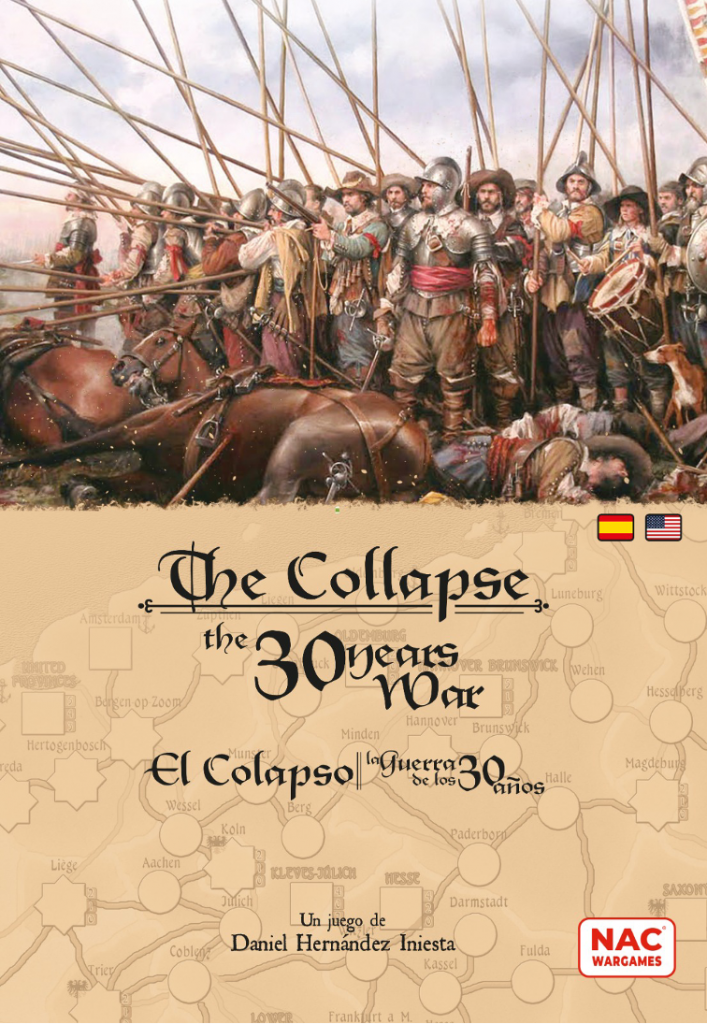
Photo: Game cover. Art from Augusto Ferrer Dalmau
1. Logistics impact at ‘The Collapse’
‘The Collapse’ has a design as a strategic game, and with a game scale for each turn of 2-3 years. If you are interested in knowing the game scale for the sieges, view the article ‘Los Asedios en El Colapso’ on this website.
Taking into consideration this aspect of strategic design and the turn duration, logistics could not be focused on supply lines for the following reasons:
1) A duration of 1 year would make sense when having a strategic redeployment or return to a safe area with supplies, during the winter season when the armies maneuver at the 30 years’ war was reasonable.
• For this reason, the game, having a scale of 2-3 years, focuses strategically on the control of home regions, which are those that provide each faction with material and human resources, such as the case of Spain (Flanders, Franche-Comté and Lombardy), or non-home regions controlled. At the end of the turn and during the ‘End of Turn Attrition’ step, having access to home regions or other regions controlled, simulates political control over distribution and supply allowing players to not suffer attrition (loss of unit steps) by logistics.
• Example: Spain (nation controlled by the Catholic faction), has an army in Flanders at the end of the turn and does not suffer attrition as it is one of its home regions. But if, on the other hand, at the end of the turn an army in Württemberg and it has not controlled the region it would suffer attrition.
2) Logistics during the 30-year war focused on gaining food and other supplies while moving the armies and units, and generally ravaging regions and assaults or sieges of cities.
• In the game the armies supply during their movement is reflected in 2 ways with an impact on the game to obtain resources and/or impact their movement:
a) By using the replacements operation. For each Operations point of a card that is used for this operation, a player accumulates 2 resources. This situation reflects the time investment in the operation by the player to look for resources during his movement without ravaging the region.
And be careful, because the proper use of game capabilities that may have been acquired previously by the players brings more resources if combined with this operation.
Example: The Protestant player spends 1 card operations point to perform a replacements operation and accumulates 2 resources on his resource counter at the general game track. But if the player uses combined with the replacements operation the capability ‘Foreign Aid’ that has previously acquired during the planning phase at the beginning of the turn, gains 2 additional resources and in total would be 4. Later those resources accumulated will be used during the next planning phase to recover reduced-strength units that have suffered attrition, promote units, recruit militias and influence over diplomacy.
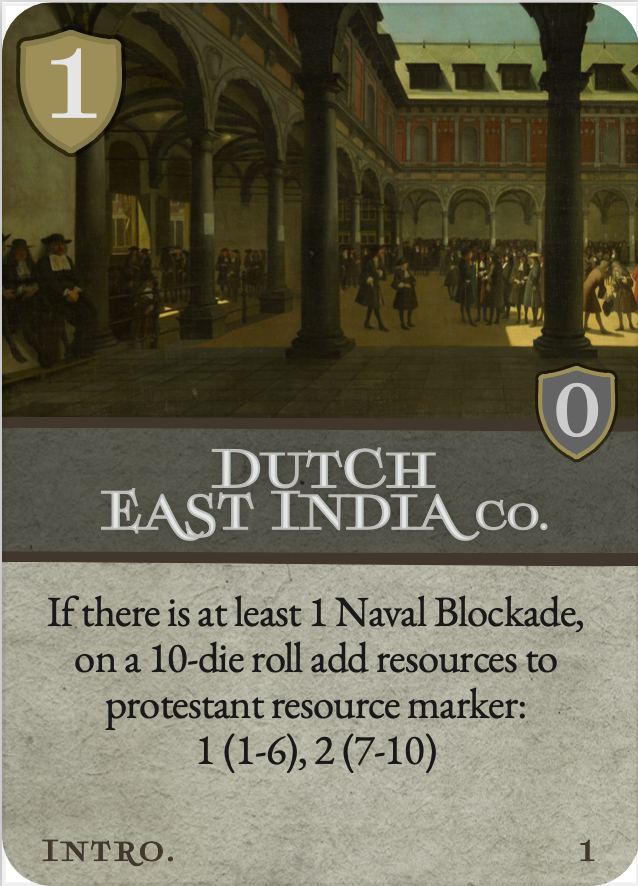
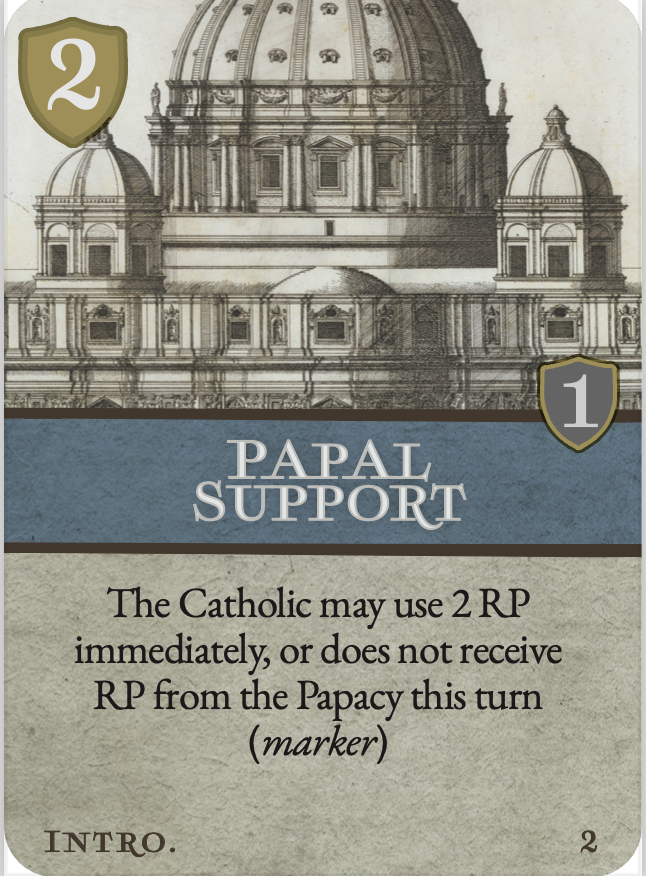
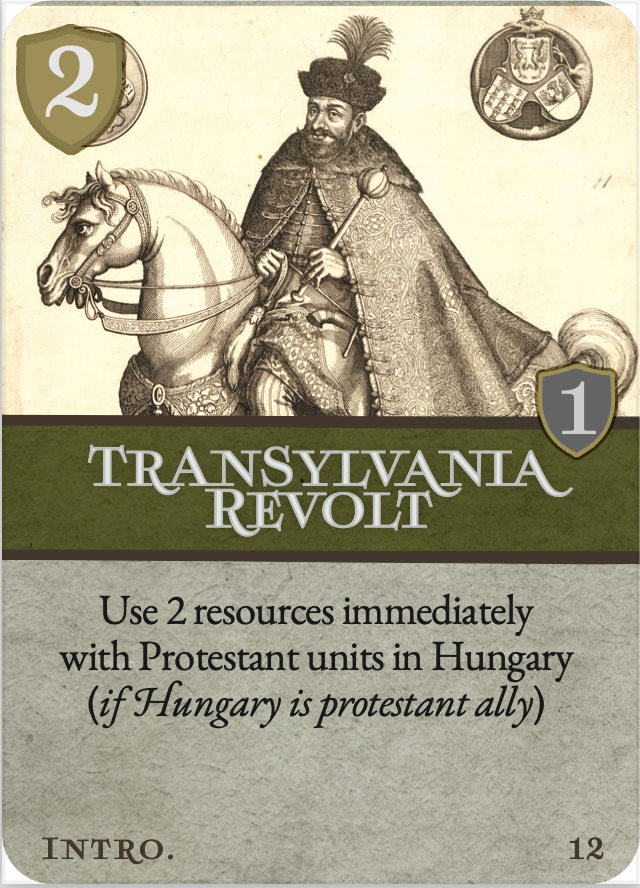
Photos: Game playtest cards. Art by Donal Hegarty
b) By ravaging the regions. When a player takes control of an enemy city, gains resources based on the type of city: minor city (1 resource), fortified city (3 resources), and capitals (5 resources). However, these resources are at the cost of ravaging a region and to indicate this situation a ravage marker is placed in the region.
- If it is a region with only one city (i.e., Hamburg, Liège, Trieste), the ravage marker is not placed (but the corresponding resources are accumulated for the type of city ravaged).
- If it is a region with more than one city, the first time the region is ravaged, place a ravage marker with a yellow image, and the second time the marker is turned next to it with a gray image. If you take control of a 3rd or later cities in the region (if it contains them), you take control normally but place no more ravage markers which are limited to 1 per region, and at most on its gray side. But this action has a downside for the player, which is that if a player moves from a region with a ravage marker, suffers attrition (turns a unit from full strength side to reduced-strength side if it has any, and from reduced-strength side to the force’ pool if has no full-strength side units). In addition, at the start of the turn the ravage markers are flipped from their gray side to yellow or from the yellow side to the force’ pool, except if there are armies from both factions in the same region with ravage markers that are not flipped. For this reason, ravaging provides more resources, but placing ravage markers limits movement by simulating that it is more difficult to obtain resources and the overfeeding of armies from both factions in the same region prevents a region from recovering that turn from the ravaging previously suffered.
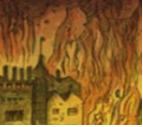
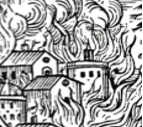
Photo: Ravage marker (initial-yellow and final-grey)
Finally, the use of the ‘Supply Wagons’ capability prevents a unit from suffering attrition, and with more than 26 different abilities to choose from at the start of the turn during the planning phase, it brings great replayability and different strategies to each game. Therefore, if a player anticipates a campaign in a distant region or that may bring challenged, it may be interesting to acquire this capability… if it is still available, since it could have been chosen by the other player. More information about the game’s capabilities in a future article.
2. The Collapse at ‘Pax Lúdica’ convention
During ‘Pax Lúdica’ organized by Mesa de Guerra and the Pax Lúdica club in the city of Cádiz (Spain) between September 29 and October 1, you will be able to see the game progress on the map, cards, counters and mechanics that I encourage you to come to play and meet us together.
I also encourage you to sign up for the confconventionerence (registration deadline next August 31). For 20 euros of registration, you will have access to game tables, tournaments, a t-shirt and the game I have specially designed for the days of ‘La Defensa-El Asedio de Cádiz 1625’ with the stunning art of Nils Johansson and that will be given for free to the attendees.
More information in the link https://mesadeguerra.com/jornadas-pax-ludica-2023/

Photo: ‘Pax Lúdica’ convention in Cádiz poster
3. The Collapse
‘The Collapse’ is a strategic wargame about the 30 years’ war (1618-1648) that after an intense playtest in wargame conventions and board games and in vassal, is available to playtest in vassal to all interested people.
If you are interested to join the game playtesting, register at the link below and in the following days I will contact you with the files and any questions that you may have
Registration link to the vassal testing of ‘The Collapse’:
https://docs.google.com/forms/d/1mHUTHszl_MAdkOpBzmY5EnjM5efyyf0P_z0uxbH-kxI/edit


Photo: Game playtest leader counter. Art by Donal Hegarty
The game is currently in reserve on the NAC Wargames and Mas que Oca website (without payment request), where you can support the publication of the game with your registration at http://tinyurl.com/yfkkdbc3 Click on ‘APÚNTAME’ (Register me in Spanish) and the registration form in English will be available.
Your registration in the game reservation is very important, to support the game being finally published.
If you have any questions or want me to expand on an article or write about something that interests you, please let me know by commenting on this article, email me at daniel.hndez@gmail.com, and follow the game news on Twitter (@HndezDaniel) and Instagram (daniel_hernandez_iniesta)
Feel free to check out the game’s page on BoardGameGeek on ‘The Collapse’: https://boardgamegeek.com/boardgame/389679/collapse
GAME DESIGNER: DANIEL HERNÁNDEZ INIESTA

